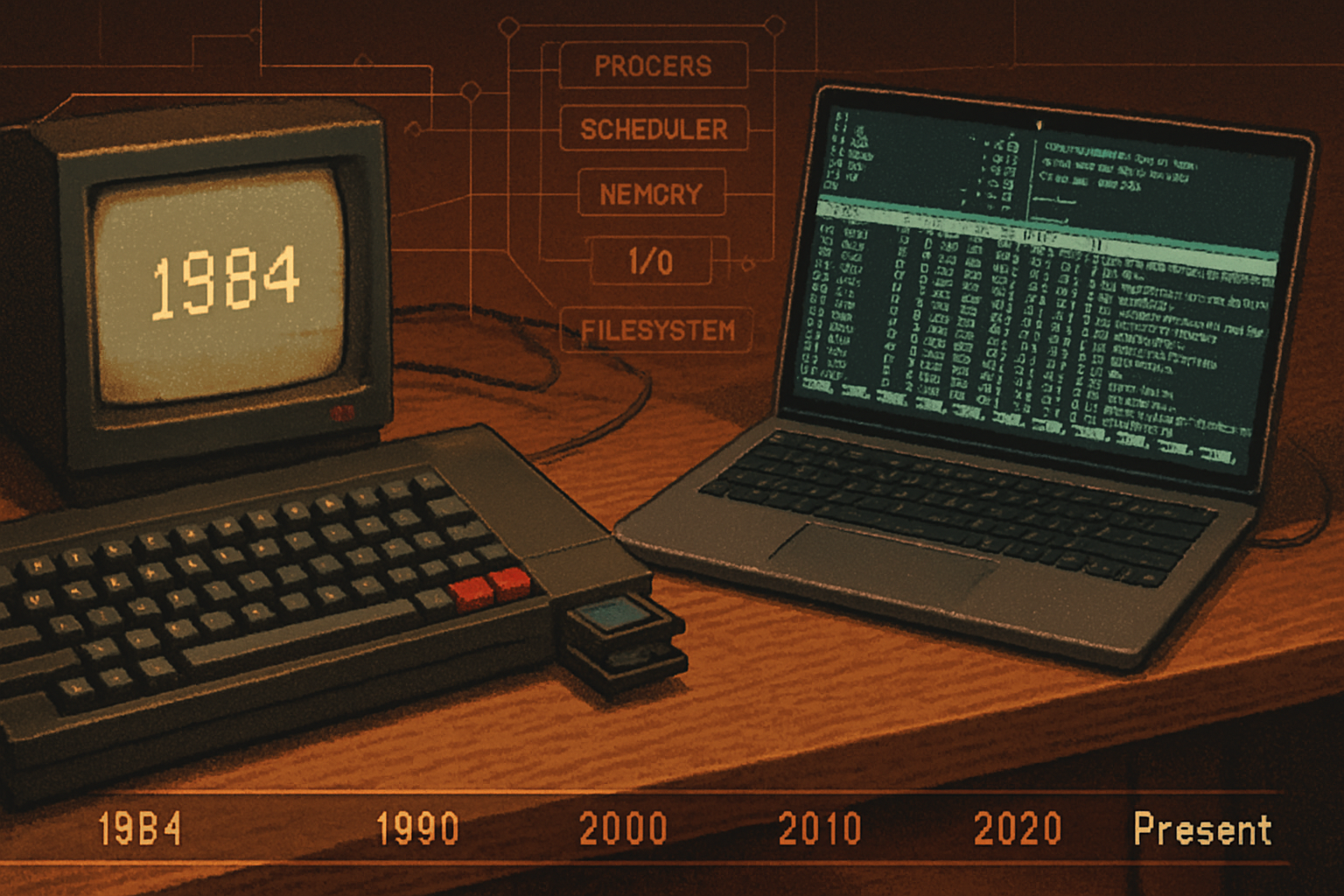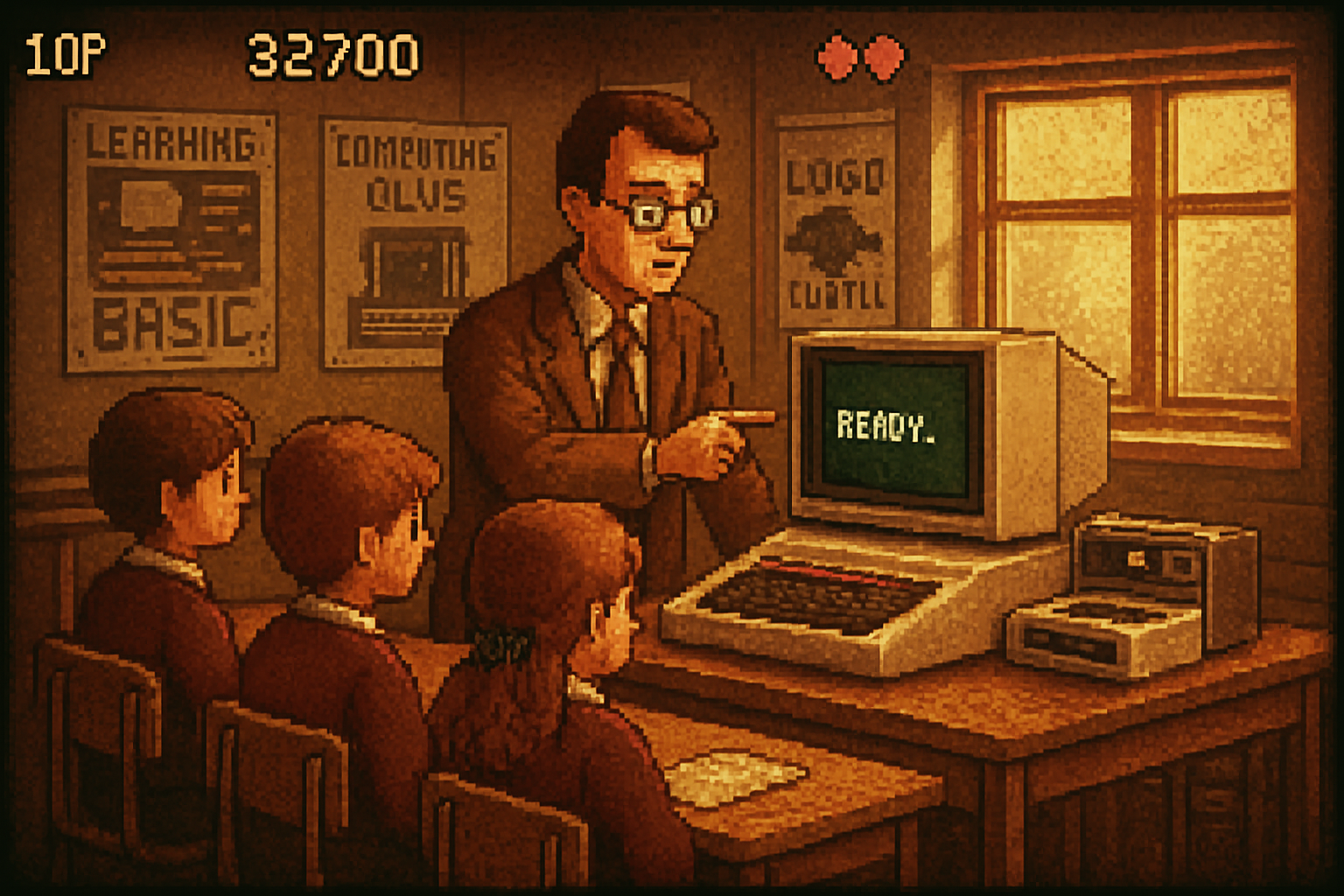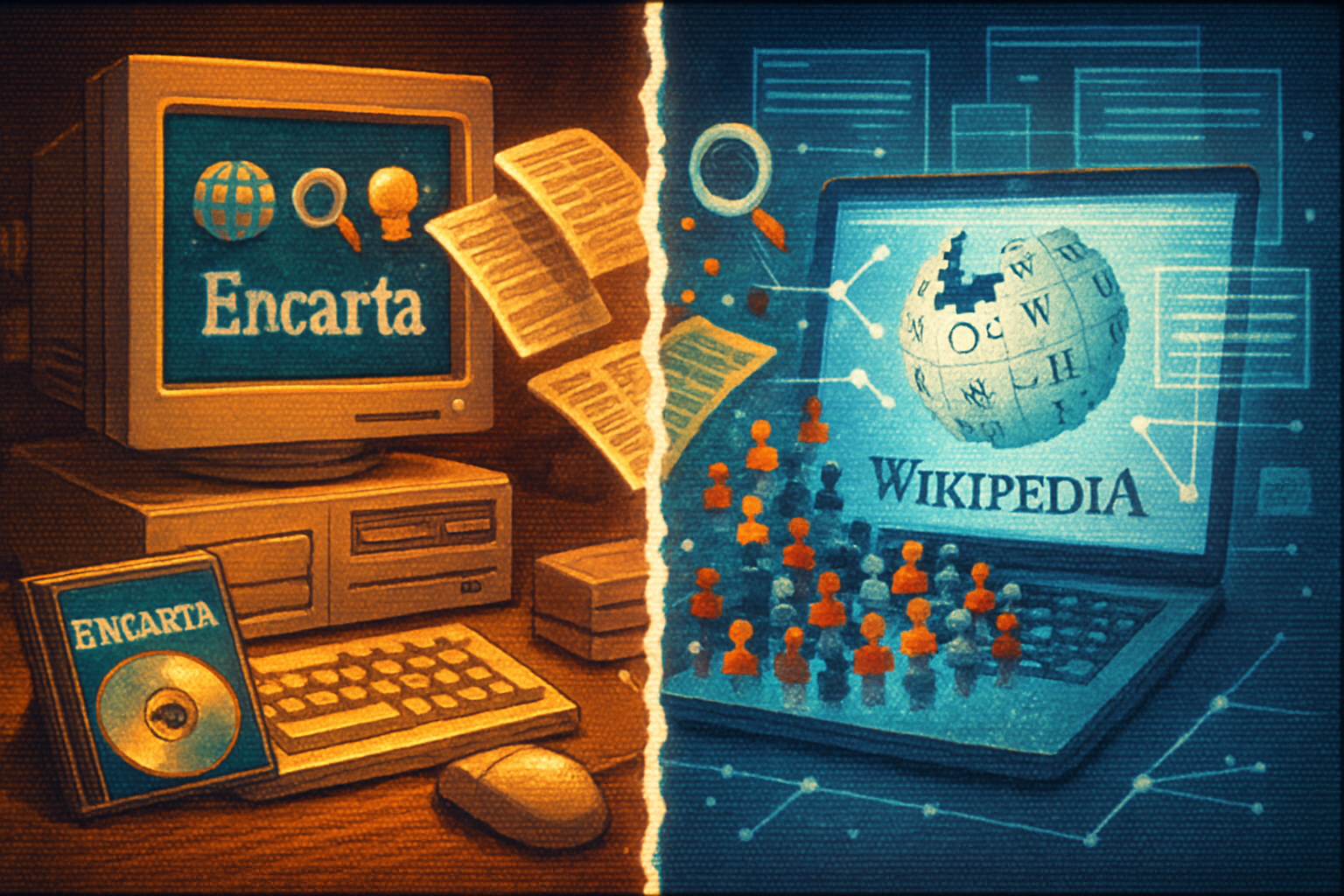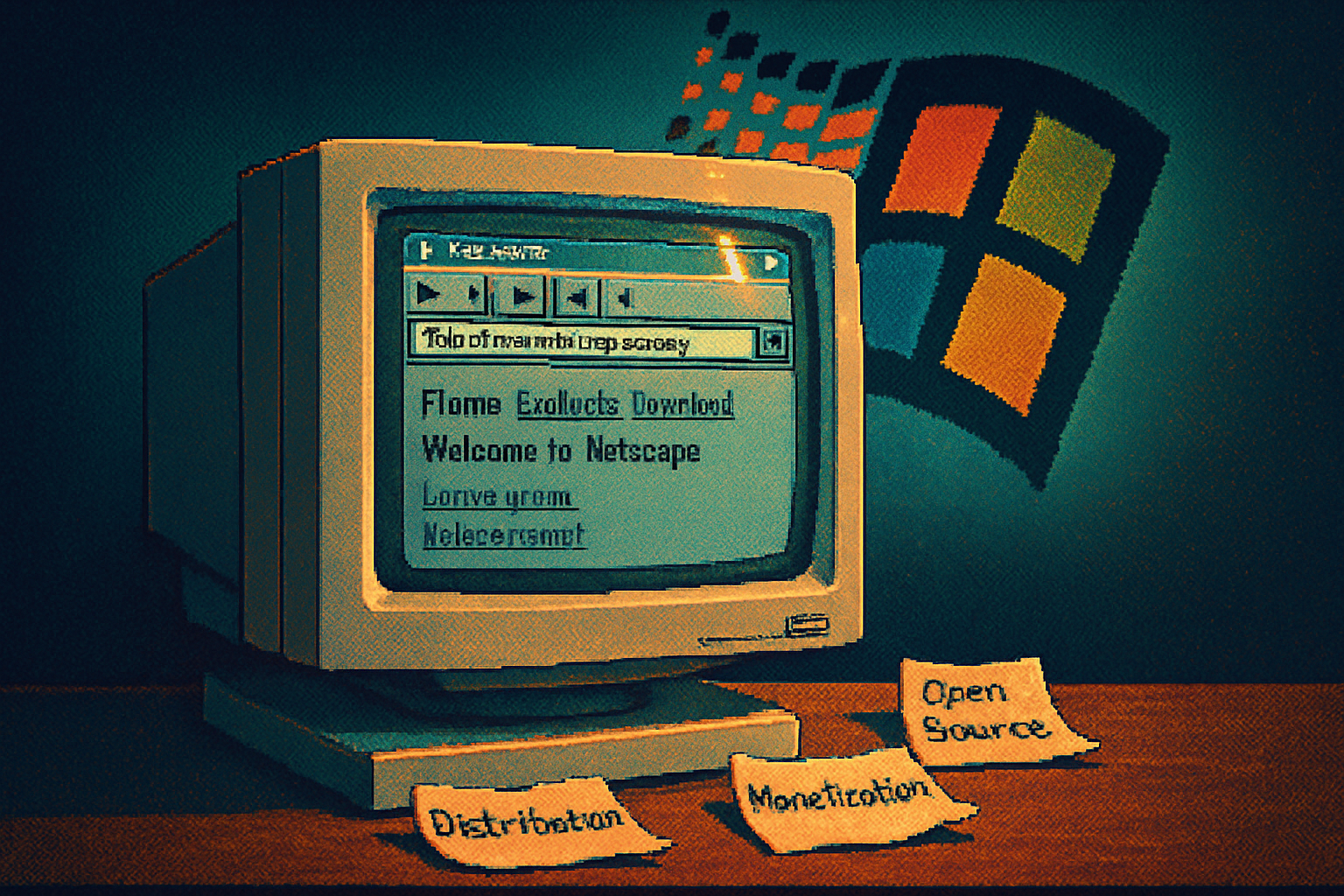· retrotech · 7 min read
Revisiting the Sinclair QL: Its Legacy in Modern Computing
The Sinclair QL was an ambitious 1984 microcomputer that shipped advanced features - a 68008 CPU, ROM-based SuperBASIC, and a multitasking OS - at a time when most home machines were single-tasking. This article revisits the QL’s architecture and software, explores how its ideas anticipated later developments in multitasking operating systems and programming environments, and traces the lines of influence to contemporary computing.

Introduction
In 1984 Sinclair Research launched the QL (Quantum Leap), an attempt to leap from hobbyist home computers into the small-business and professional market. Packed into a compact chassis were features unusual for its price point and era: a Motorola 68008 CPU, 128 KB of RAM (expandable), twin built-in Microdrive tape cartridges, a ROM-based structured BASIC and - most strikingly - an operating system designed with multitasking in mind.
The QL was imperfect and commercially troubled, but its ideas - especially around multitasking and language-driven programmability - were ahead of many contemporaries. This article revisits those ideas, looks at the technical choices that enabled them, and traces how the QL’s concepts have echoes in modern computing.
Why the QL mattered (at the time)
Advanced processor choice - The QL used the Motorola 68008, a member of the 68000 family that delivered 32-bit architecture benefits on a narrower system bus to cut costs. The 68k family later became the backbone of influential workstations and personal machines (e.g., Macintosh, Amiga, Atari ST) and encouraged OS and language development that targeted richer instruction sets and addressing modes. [Source: Motorola 68000 history]
Built-in development environment - SuperBASIC, the ROM-based language, was far more than a toy interpreter. It supported structured programming constructs, procedures, local variables and an integrated command environment. By placing a capable language in ROM and making it central to the user experience, the QL blurred the line between machine and programming environment - an approach seen today in many embedded devices and firmware-first platforms. [Source: SuperBASIC]
Multitasking-focused OS - The QL shipped with QDOS, an operating system written specifically for the platform. QDOS provided a multitasking model uncommon in mid-1980s consumer micros, giving the QL a concurrent-process capability well before such features were widespread on PCs. That design choice is arguably the QL’s most forward-looking contribution. [Sources: Sinclair QL, QDOS]
Technical snapshot: how the QL worked
Hardware - 7.5 MHz Motorola 68008 CPU, 128 KB RAM on board (expandable via expansions), 512×256 (or other modes) bitmap display, dual Microdrive cartridge storage, serial and parallel ports. The 68008 gave a taste of 32-bit programming model at an accessible price.
Storage - The Microdrive was a proprietary, continuous loop tape cartridge intended to provide higher-capacity, faster-access removable storage than cassettes. In practice it had reliability issues - but as a concept it pushed cheap removable storage ideas that later matured into cartridges, flash cards and solid-state removable media. [Source: Microdrive (Sinclair)]
QDOS and multitasking - The QL’s operating system managed multiple “tasks” (process-like units) and supported inter-task communication and device abstraction. The OS design emphasized small kernel primitives and a compact API exposed to higher-level programs and the SuperBASIC shell. While the 68008 lacked sophisticated MMU protections, QDOS implemented scheduling and resource handling appropriate to the hardware constraints. Many later community OSes iterated on QDOS’ ideas to add robustness and features. [Sources: QDOS, Preemptive multitasking]
SuperBASIC and the idea of a built-in, structured language
SuperBASIC was not just BASIC with line numbers: it provided structured control, procedures with local variables, matrix operations, and system-level commands to talk to the OS. By embedding this capability in ROM, Sinclair made programming accessible to users right on power-up, encouraging exploration and rapid prototyping. This “language-first” approach resonates with several modern threads:
Firmware languages - Many embedded platforms expose scripting or REPL environments (e.g., MicroPython on microcontrollers) so developers can interactively program hardware - much like SuperBASIC invited direct machine interaction.
Integrated tooling - The idea of a computer booting into an environment that is both a shell and language points forward to modern integrated shells (e.g., Python REPL, Jupyter notebooks) that blend execution and development.
Multitasking on constrained hardware: what the QL anticipated
In the early-to-mid 1980s most home systems were fundamentally single-tasking: you ran one program at a time. The QL’s decision to ship with a multitasking OS was therefore exceptional; it prefigured trends that would later become mainstream:
Consumer multitasking - Graphical, multitasking desktops didn’t become common on mainstream PCs until the 1990s (and even then, early Windows versions used cooperative multitasking for some time). The QL exposed microcomputer users earlier to the productivity model of simultaneously running editors, communications tools and background tasks.
Small-system kernels - QDOS showed that you could implement a lightweight multitasking kernel with simple primitives suitable for systems lacking MMUs and with limited memory. That lesson is central to many embedded RTOSes and modern microkernels, which trade heavyweight features for predictable scheduling and small footprint.
Extensibility and community OS evolution - The QL’s base OS inspired replacement and enhanced OS projects (community kernels and enhanced shells) that added features, bug fixes and more robust APIs. Those community-driven improvements echo the later open-source ecosystem patterns where user communities evolve and extend base platforms.
Direct descendants and community efforts
The QL ecosystem never died. Third-party hardware and software extended the machine’s life, and several alternative OS projects evolved from the original QDOS design to address its limits. Notable community work includes enhanced kernels and compatibility layers that added improved multitasking, extended file systems and modern I/O support.
These continuations keep both the hardware and the ideas alive. For example, SMSQ/E is a modern QDOS-compatible OS that adds many modern features while retaining the original API philosophy, showing how an early design can be iteratively improved by its user community. [Source: SMSQ/E]
Lines of influence to modern computing
It’s important to be measured when claiming direct causation - the QL was one of many experiments in the 1980s. Still, several clear threads connect the QL’s ideas to later developments:
Multitasking paradigms - By shipping multitasking software on an affordable consumer device, the QL helped normalize the idea that personal machines could host multiple concurrent activities - a mindset that later desktops and mobile OSes would fully embrace.
Language-centric UX - SuperBASIC’s emphasis on an integrated, structured language as the user’s entry point anticipated later environments that place programmatic control and interactivity at the center of the user experience (notably in embedded scripting, REPL-driven workflows and notebook-style development).
Lightweight kernel design - The QL’s compact OS and the community’s enhancements illustrate a path of small, pragmatic kernels delivering scheduling and inter-task services on constrained hardware - a design philosophy that lives on in embedded RTOSes, IoT firmware and microcontroller operating layers.
Hobbyist and retrofit culture - The QL’s community-driven improvements, hardware clones and emulators foreshadowed the strong retrocomputing and maker cultures that drive many modern platform revivals and inspire hobbyist OS and hardware projects.
Lessons and limitations
There’s a cautionary tale in the QL story as well:
Marketing and execution matter - Innovative design isn’t enough - production issues, unreliable storage (microdrives), pricing and ill-timed market positioning limited uptake. Technical foresight must be paired with reliable manufacturing and clear market fit.
Hardware constraints limit the reach of software innovation - QDOS did a lot with little memory and no hardware MMU, but true protection and richer process isolation require hardware features absent on many 1980s micros. That mismatch constrained the kinds of applications that could safely rely on multitasking.
Why the QL still matters today
The Sinclair QL is a reminder that important innovations can come from unexpected places. It showed that multitasking and a language-first user experience could be feasible on affordable machines, and its community-driven evolution highlights how user ecosystems can refine and extend a platform’s ideas long after commercial support wanes.
For historians and system designers, the QL offers concrete lessons:
- How to design minimalist OS primitives suitable for constrained systems.
- How integrating a capable language into firmware changes user expectations and workflows.
- How community ecosystems can rescue and advance platforms when companies move on.
Conclusion
The Sinclair QL was not a commercial triumph, but it was a provocative experiment. Its mixture of 68k-class processing, a structured ROM language and an OS built with multitasking in mind anticipated several threads of modern computing: lightweight kernels for constrained environments, language-driven interactivity and the normalization of concurrent processes on personal machines.
Today, the QL’s technical descendants live on in hobbyist projects, emulators and enhanced OSes. Even where the QL failed in the marketplace, it succeeded in demonstrating what a compact, integrated computing environment could look like - and that influence quietly threads through many of the systems we use today.
Further reading
- Sinclair QL - Wikipedia: https://en.wikipedia.org/wiki/Sinclair_QL
- QDOS (QL operating system) - Wikipedia: https://en.wikipedia.org/wiki/QDOS_(operating_system)
- SuperBASIC - Wikipedia: https://en.wikipedia.org/wiki/SuperBASIC
- Microdrive - Wikipedia: https://en.wikipedia.org/wiki/Microdrive
- Motorola 68000 family - Wikipedia: https://en.wikipedia.org/wiki/Motorola_68000_family
- SMSQ/E - Wikipedia: https://en.wikipedia.org/wiki/SMSQ/E
- Multitasking / Preemptive multitasking - Wikipedia: https://en.wikipedia.org/wiki/Multitasking



